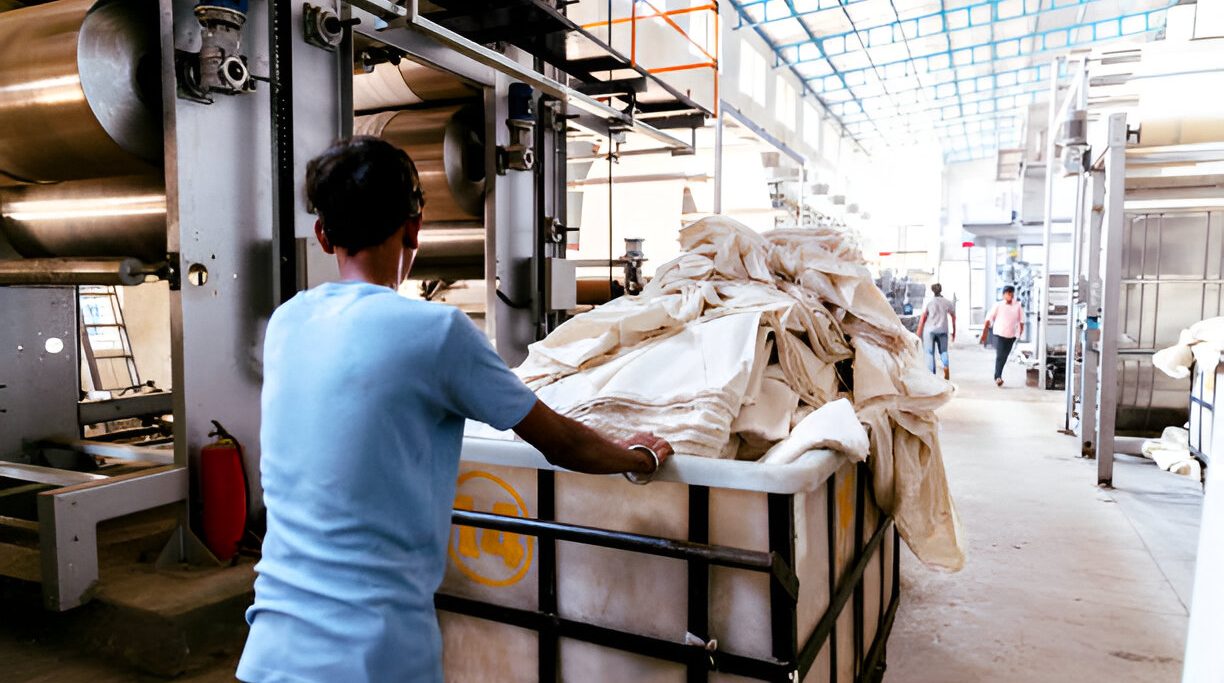When it comes to fabric selection, understanding GSM (Grams per Square Meter) is crucial. This metric not only influences the quality and feel of the fabric but also determines its suitability for different applications. In this blog, we’ll delve into what GSM is, why it matters, and how it can guide your choices in fabric.
What is GSM?
GSM stands for Grams per Square Meter, a standard measurement that indicates the weight of a fabric. Essentially, it tells you how much a square meter of fabric weighs in grams. This simple yet informative number can tell you a lot about the fabric’s characteristics, including its thickness, durability, and appropriate use.
Why is GSM Important?
1. Fabric Quality
Higher GSM often correlates with higher quality fabric. Heavier fabrics are typically more durable and suitable for long-term use. Conversely, lighter fabrics might be less durable but offer greater comfort and breathability.
2. Usage Suitability
Different applications require different GSM ranges. Lightweight fabrics are ideal for summer clothing, linings, and delicate garments. Medium-weight fabrics are suitable for shirts, dresses, and light jackets, while heavyweight fabrics are perfect for winter wear and upholstery.
3. Comfort and Performance
The GSM of a fabric affects its breathability, warmth, and overall comfort. Lower GSM fabrics are breathable and great for warmer climates, whereas higher GSM fabrics provide insulation, making them suitable for cooler climates.
Typical GSM Ranges for Different Fabrics
– Lightweight Fabrics (100-150 GSM)
– Best for: Summer clothing, linings, and delicate garments.
– Examples: Chiffon, silk, lightweight cotton.
– Medium-weight Fabrics (150-350 GSM)
– Best for: Shirts, dresses, light jackets, and home textiles.
– Examples: Denim, heavier cotton, linen.
– Heavyweight Fabrics (350+ GSM)
– Best for: Winter clothing, upholstery, and durable outerwear.
– Examples: Wool, canvas, heavy fleece.
Also read: What is a Cotton Spandex Fabric
How to Measure GSM
To measure the GSM of a fabric, you typically use a GSM cutter and a precise weighing scale. Here’s a simplified process:
1. Cut a Sample: Use a GSM cutter to cut a circular piece of fabric with a known area (usually 100 square centimeters).
2. Weigh the Sample: Weigh the fabric sample using a precise weighing scale.
3. Calculate GSM: Use the weight of the sample and the area it covers to calculate the GSM.
Applications of GSM
– Textile Manufacturing: Helps manufacturers determine the appropriate use of fabric and maintain consistency in production.
– Quality Control: Ensures that fabrics meet specified weight and quality standards for different applications.
– Retail and Marketing: Provides consumers with information about the fabric’s weight and expected performance, aiding in purchasing decisions.
Why GSM is Not a Quality Standard
1. Does Not Reflect Fabric Strength and Durability
GSM measures the weight of the fabric but does not indicate its strength and durability. A high GSM fabric might be heavy, but it could still tear or wear out quickly if it is made from low-quality fibers or poorly constructed.
2. Lacks Information on Fiber Quality
The quality of the fibers used in the fabric significantly impacts its performance and longevity. Fabrics made from high-quality fibers like long-staple cotton or fine merino wool may have a lower GSM but offer superior softness, durability, and comfort compared to fabrics made from lower-quality fibers.
3. Ignores Fabric Construction
Fabric construction, including the weave or knit type, plays a vital role in determining the fabric’s quality. Two fabrics with the same GSM can have different levels of quality if one is tightly woven while the other is loosely woven. A tightly woven fabric tends to be more durable and less prone to pilling and snagging.
4. Overlooks Finishing Processes
The finishing processes applied to the fabric, such as dyeing, printing, and treatments like water resistance or anti-wrinkle, can drastically affect the fabric’s quality. A fabric with a higher GSM but poor finishing might not perform as well as a fabric with a lower GSM that has been expertly finished.
5. Quality of Dyes and Colorfastness
GSM does not account for the quality of dyes used and the fabric’s colorfastness. High-quality fabrics should maintain their color and not fade easily after washing. The dyeing process and the quality of dyes used can significantly affect the fabric’s appearance and longevity.
6. Comfort and Hand Feel
The hand feel (how the fabric feels to the touch) and comfort are essential aspects of fabric quality. A fabric might have the desired GSM but can still feel rough or uncomfor against the skin if it is not made from high-quality materials or if it has not undergone the proper finishing processes.
7. Breathability and Moisture Wicking
Especially important in activewear and summer clothing, the breathability and moisture-wicking properties of a fabric are critical quality indicators. These properties are influenced by the type of fibers used and the fabric construction, not just its weight (GSM).
Understanding GSM is essential for anyone involved in the textile and fashion industries, from designers and manufacturers to consumers. It plays a significant role in determining the fabric’s suitability for different applications, ensuring that the end product meets the desired standards of quality, comfort, and performance. Whether you’re selecting fabric for a new clothing line or choosing bed linens for your home, considering the GSM can help you make an informed decision.



